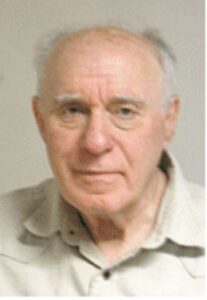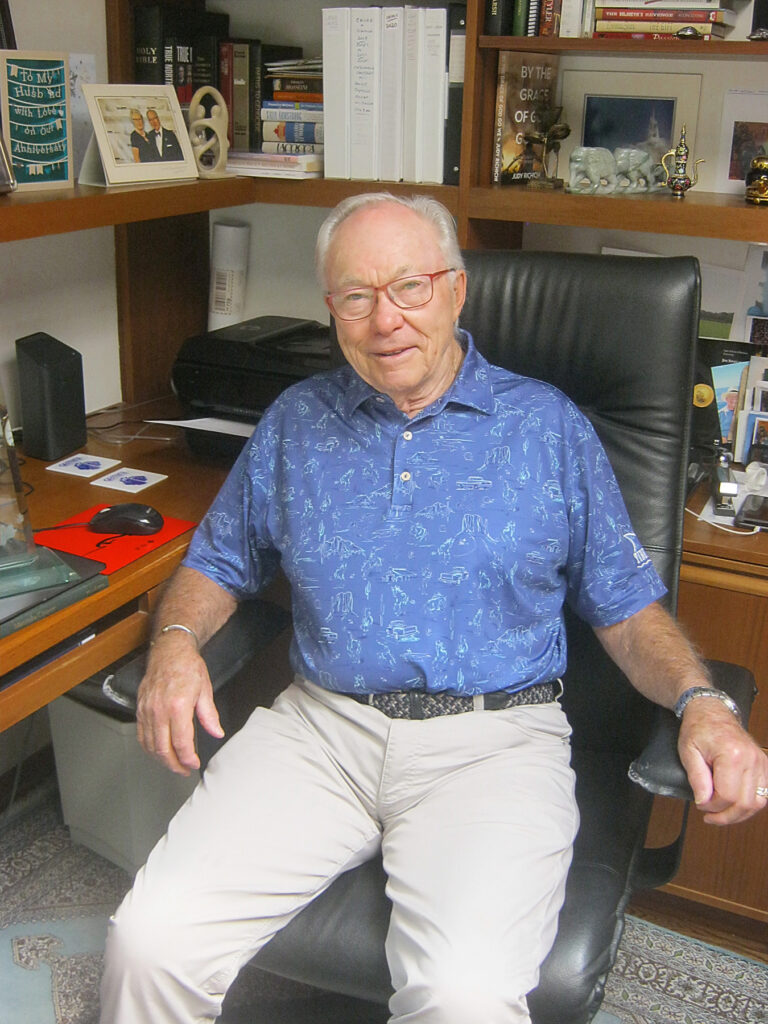
For several years beginning in 1986 or 1987, I was a stringer for Style, Canada’s garment industry magazine. As such, I got to know most of the captains of industry in the trade here. And the individual who left the most indelible impression on me was Gary Steiman who, when I knew him, was president and CEO of Gemini Fashions of Canada, at one time one of Canada’s largest distributors of outerwear -with customers and suppliers from around the world.
I found Gary to be open, gregarious, and well-informed about trends in the industry. I could always count on Gary to leave me with a lot of good material for my articles. So, it was nice to be able to reconnect with Gary and find him, although long retired from business, still hale and hearty at 87.
Gary grew up in the north end. After high school, he decided to pursue a career as a chartered accountant. He graduated in 1958, at the age of 22, and quickly found work with the federal income tax department.
“My goal in going to work with the tax department was to learn taxation from the inside before pursuing my own entrepreneurial path,” he recalls.
In 1962, he struck out on his own, forming Monarch Management Ltd. to offer consulting services on taxes and estate planning. Steiman was invited by Ralph E. King Jr., an apparel engineer from New York, to go into partnership with him and rescue Canadian Garment Ltd., a troubled Winnipeg clothing manufacturer.

“At first, I turned him down,” Gary recounts. ‘My grandfather, Louis Steiman, opened one of the city’s first garment manufacturing companies in 1904, shortly after he came to Winnipeg. He produced buffalo coats for the police force and leather jackets and coats. I hated the smell of the leather, and the place was always noisy and dirty. I didn’t want to work in that kind of environment.”
But King persisted and Gary agreed to become an equal partner in the business along with King and Meyer Klapman. The deal was that Gary would work half time at the plant while continuing to operate his consulting business.
The problem for Gary with that arrangement, he remembers, is that every time he would drive by the factory, King’s car was always parked outside. “I began to feel guilty,’ he says. “Here was Ralph putting in these long hours. As an equal partner, I felt that I should be putting in equal time. So, I went all-in.”
Three years later, Gary and Ralph King also started their own company, Gemini Fashions of Canada Ltd. “Being a CA provided me with exposure to many different kinds of business,” he points out. “I could go in any direction.” Meyer Klapman later became a partner in Gemini Fashions of Canada.
The new company initially produced ski wear (Gary has had a lifelong passion for skiing) and women’s outerwear. Later, Gemini added children’s outerwear to the mix.
A turning point came when Gary responded to a call to attend a federal government trade show for Canadian manufacturers in Toronto aimed at foreign buyers.
“There were 300 Canadian manufacturers at the event,” he recalls, “but just three were garment makers. Our first customer was Arnott and Company, a large department store in Dublin, Ireland. Mr. O’Leary, Arnott and Company’s president, placed an order for eight different styles of children’s outerwear consisting of 100 pieces in each style. Arnott became a regular customer of Gemini and recommended us to other European department stores that were part of an international association of department stores.
It was while Gary was serving as president of the Manitoba Fashion Institute, the industry’s central training and lobbying body in the province in 1989, that the Free Trade Agreement (FTA) between Canada and the United States came into effect.
“During the period between 1989 and 1995, our business grew eightfold,” he notes.
While the FTA benefitted the Canadian garment industry through the elimination of import tariffs, manufacturing products in those countries resulted in good quality products at lower costs for consumers. He points out a subsequent World Trade Organization (WTO) agreement, to boost manufacturing from some 40 low-cost countries, eliminating the WTO quotas in outerwear resulted in the devastation of the outerwear manufacturing industry in Canada.
Gary adds that Gemini Fashions continued to flourish until 2003 when the Canadian Government implemented the removal of the WTO quotas on all imported outerwear. He retired as President and CEO of Gemini in 2003 and the company closed, sadly, in 2008.
It was in 1991, after successful surgery for prostate cancer that Gary decided to take semi-retirement and spend more time with his wife, Gwen (whom he describes as “the love of my life, my soul mate, my inspiration, the centre of our family, and the cornerstone of my success in business and in my adult life”), and their then three young children.
While still working, he was honoured for his contributions to his profession through induction into the Manitoba Manufacturers Hall of Fame and the bestowing of the CME Excellence Award from the Canadian Manufacturers & Exporters. He was also named by the Council of the Institute of Chartered Accountants of Manitoba as a Fellow of the Chartered Accountants in recognition for “having rendered conspicuous service to the Institute”.
He credits his success in business to the large number of good people working with him and a diversified sales force both across Canada and around the world.
In retirement, Gary and Gwen have devoted themselves to volunteering and philanthropy. Through their family Foundation at GiftPact foundation, together with their personal contributions, they make donations annually to as many as 40 organizations with the major beneficiaries being the United Way, Siloam Mission, the Juvenile Diabetes Research Foundation, the Canadian Museum for Human Rights, the Assiniboine Park Conservancy and the HSC Foundation where Gwen is a member of the Foundation’s Bannatyne Legacy Circle and an Honorary director.
Gary and Gwen spend their winters in Florida, where he devotes his time to tennis, golf and cycling, and summers at their cottage in Lake of the Woods. They also greatly enjoy spending time with their three children, their spouses and seven grandchildren.
As Gary noted in his legacy story at the HSC Foundation, philanthropy and community service are responsibilities he takes very seriously. “You learn these things not only from your parents, but also from your close friends and business associates,” he said. “And if you are successful in business, you have an obligation to give back, not only to your community but also to those throughout the world who need assistance. In this regard, there is no shortage of opportunity to help.”

